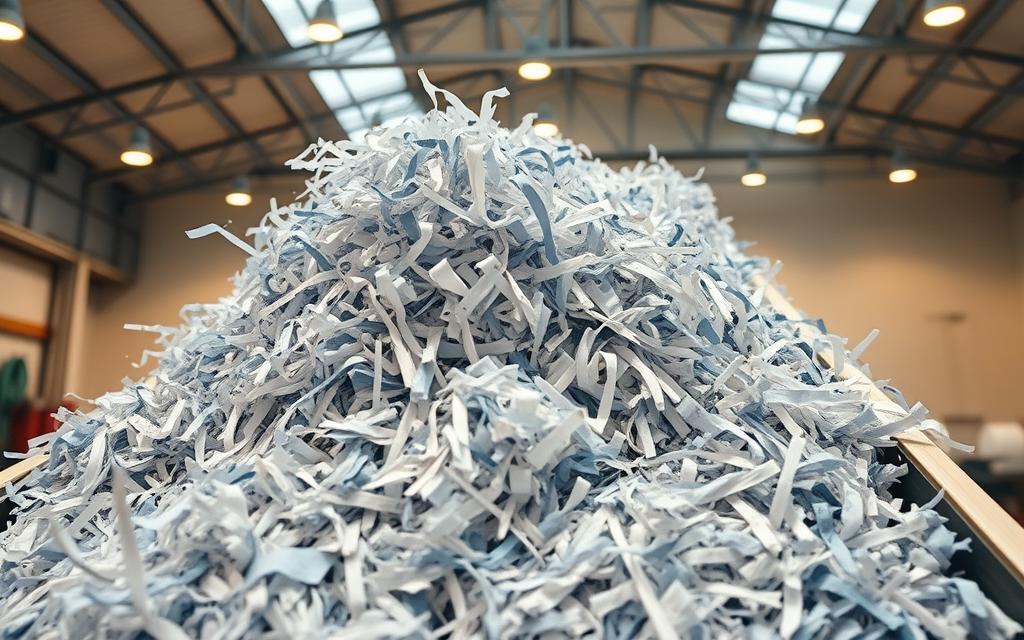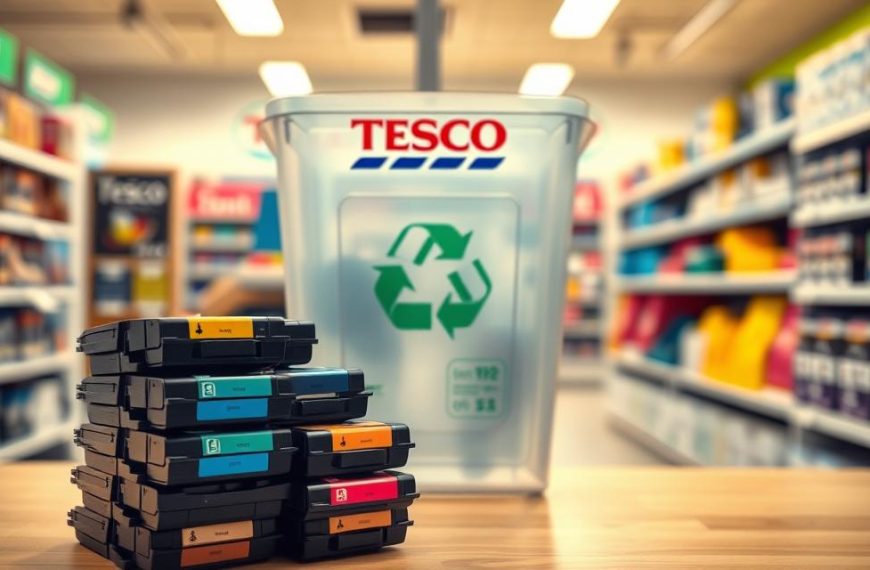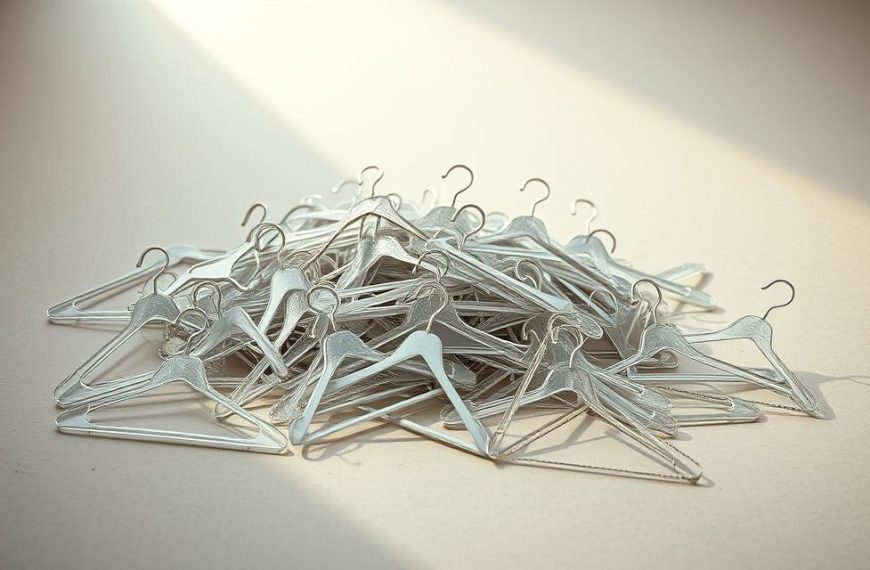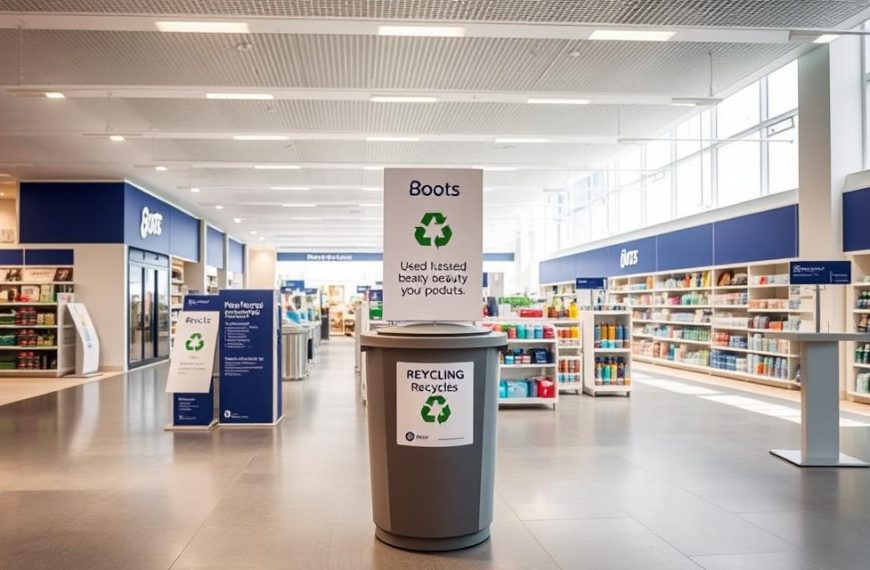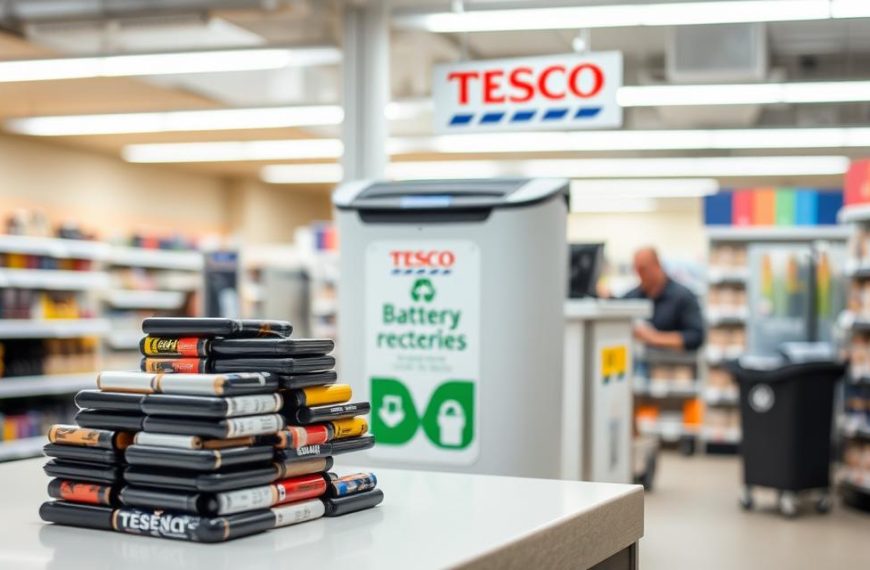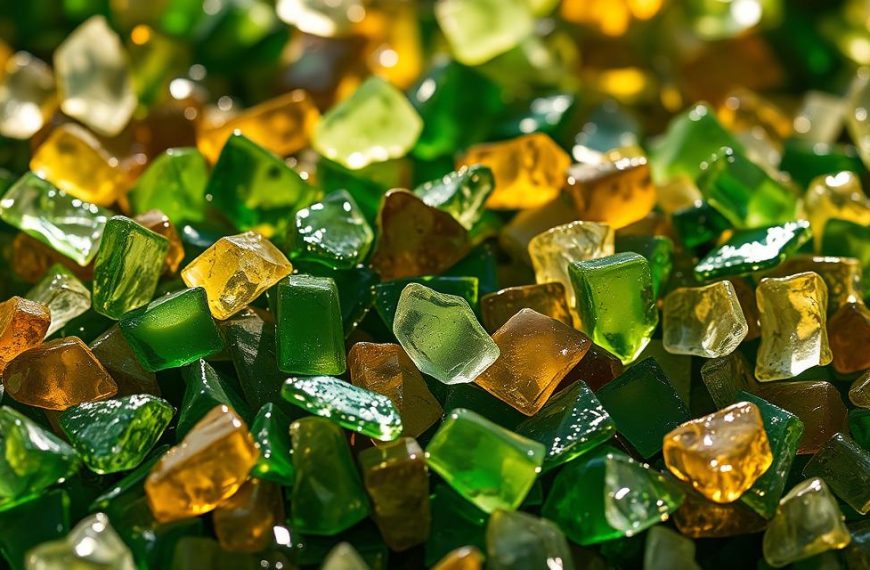Many people wonder if shredded paper belongs in the recycling bin. While recycling is a great way to reduce waste, shredded paper presents unique challenges. It’s smaller in size, making it harder to sort and process efficiently. This often leads to contamination risks in recycling facilities.
According to the EPA, 56% of paper and cardboard still ends up in landfills despite recycling efforts. Shredded paper requires specialized handling compared to whole sheets. Municipal guidelines vary, so it’s essential to check local rules before tossing it into the bin.
Balancing security needs with recycling efficiency is another concern. Shredding protects sensitive information, but it can complicate the recycling process. Understanding these challenges helps make informed decisions about paper waste.
Introduction to Shredded Paper Recycling
Recycling shredded paper involves unique considerations compared to whole sheets. While standard paper is easily processed at recycling facilities, shredded materials pose specific challenges. Their smaller size makes sorting and processing more difficult, often leading to inefficiencies.
Balancing privacy protection with environmental responsibility is another key issue. Shredding sensitive documents ensures security, but it complicates the recycling process. According to Wirecutter, only truly confidential items should be shredded. For non-sensitive papers, using permanent ink to mark out information is a practical alternative.
Another factor to consider is fiber degradation. Shredding breaks down paper fibers, reducing their quality and recyclability. This makes it harder for recycling facilities to repurpose the materials effectively.
Understanding these challenges helps individuals make informed decisions. By prioritizing both security and the environment, we can contribute to more efficient recycling systems.
Can Shredded Paper Go Into the Recycle Bin?
Disposing of shredded paper correctly is more complex than it seems. Most curbside programs reject loose shreds due to their small size. These tiny pieces often jam sorting machinery at recycling centers, leading to inefficiencies and increased costs.
Another concern is contamination. Shreds can mix with other recyclables, reducing their quality. This makes it harder for the facility to process materials effectively. As a result, shredded material is frequently sorted as trash instead of being recycled.
Max Eddy, an industry expert, emphasizes the balance between privacy and recyclability. “Shredding is essential for sensitive documents, but it’s important to consider the environmental impact,” he says. For non-confidential items, alternatives like permanent ink can protect information without complicating the recycling process.
If your local program doesn’t accept loose shreds, there are other options. Many recycling centers offer drop-off services for properly contained shredded material. Alternatively, community programs and shredding events provide safe disposal methods.
| Issue | Impact | Solution |
|---|---|---|
| Loose shreds in curbside bins | Jams machinery, increases costs | Use drop-off services or containment methods |
| Contamination risks | Reduces recyclable quality | Separate shreds from other materials |
| Privacy concerns | Necessitates shredding | Use ink for non-sensitive items |
Why Shredded Paper Recycling Is Different
Recycling small paper strips presents unique challenges compared to standard paper. Their lightweight nature and tiny size make them harder to handle at recycling facilities. Unlike whole sheets, these strips often blow out of bins or trucks during transport, creating logistical issues.
Additionally, the sorting process becomes more complex. Small strips can cling to other materials, leading to cross-contamination. This reduces the quality of recyclables and increases processing costs. Facilities must invest extra time and resources to separate these tiny particles effectively.
Lightweight and Hard to Sort
One of the main challenges is the lightweight nature of shredded materials. During transport, these strips can easily escape from bins or trucks. This not only wastes resources but also creates litter in the surrounding area.
At the facility, sorting machinery struggles to handle such small particles. The strips often jam equipment, leading to downtime and increased maintenance costs. This inefficiency makes the process less sustainable compared to recycling whole sheets.
Risk of Contamination
Contamination is another significant issue. Small strips can mix with plastics or other recyclables, reducing their quality. This intermingling makes it harder for facilities to repurpose the materials effectively.
Fiber degradation further complicates the process. Shredding breaks down paper fibers, making them too short for effective repulping. This reduces the overall recyclability of the strips, limiting their potential for reuse.
| Challenge | Impact | Solution |
|---|---|---|
| Lightweight strips | Blow out during transport | Use secure containment methods |
| Sorting difficulties | Jams machinery, increases costs | Invest in specialized equipment |
| Contamination risks | Reduces recyclable quality | Separate strips from other materials |
| Fiber degradation | Limits repulping efficiency | Shred only when necessary |
How to Properly Contain Shredded Paper
Proper containment of shredded material ensures efficient recycling and minimizes waste. Municipalities often have specific guidelines for preparing these materials. Following these rules helps avoid contamination and ensures the material is processed correctly.
Using Transparent Plastic Bags
Many cities require shredded material to be placed in clear plastic bags. This allows workers to see the contents and ensures it’s handled properly. Sealed bags also prevent spillage during transport, reducing litter and contamination risks.
For added security, double-bagging is recommended. This extra layer keeps the material contained and protects sensitive information. Always check local guidelines for weight limits to avoid issues during curbside pickup.
Using Cardboard Boxes
Another effective way to store shredded material is in sealed cardboard boxes. These containers are sturdy and prevent the material from escaping. Boxes must be securely taped to avoid spillage during transport.
Using cardboard boxes also aligns with recycling goals, as both the container and its contents can be processed together. However, ensure the box isn’t too heavy for curbside pickup, as some programs have weight restrictions.
| Container Type | Benefits | Considerations |
|---|---|---|
| Transparent Plastic Bags | Visibility, prevents spillage | Check weight limits, double-bag for security |
| Cardboard Boxes | Sturdy, recyclable | Seal securely, avoid overloading |
If curbside pickup isn’t available, many bins at local recycling centers accept properly contained shredded material. Drop-off locations and community shredding events are also excellent alternatives for safe disposal.
Local Guidelines for Shredded Paper Recycling
Understanding local guidelines for handling shredded material is essential for effective recycling. Municipalities often have specific requirements, and these can vary widely. Checking with your city’s official website or waste management department is the best way to ensure compliance.
Some areas require special drop-offs instead of curbside pickup. This ensures the material is processed correctly at the recycling facility. For example, major metro areas like New York and Los Angeles have detailed instructions for residents.
Regional differences also play a role. Coastal cities may have stricter rules due to environmental concerns, while inland areas might focus on efficiency. Always ask your municipal waste department key questions, such as:
- Is curbside pickup available for shredded items?
- Are there specific containment methods required?
- Where are the nearest drop-off locations?
Non-compliance with local guidelines can lead to fines or rejected materials. This not only wastes resources but also harms the environment. By following the rules, you contribute to a more efficient recycling system.
Shredding Events and Community Programs
Community shredding events provide a secure and eco-friendly way to handle sensitive materials. These programs are designed to help residents dispose of confidential documents safely while supporting recycling efforts. Many cities host annual events, making it easier for individuals to participate.
Security is a top priority at these events. All materials are processed on-site using industrial-grade equipment. This ensures that sensitive information is destroyed immediately, reducing the risk of identity theft. Participants can witness the process, adding an extra layer of trust.
Costs vary depending on the services offered. Some events are free, while others charge a nominal fee based on the volume of materials. Bulk processing at these events also has environmental benefits. By collecting large quantities, organizers can streamline the recycling process, reducing energy consumption and waste.
Preparation is key to making the most of these events. Here’s a quick checklist to follow:
- Sort materials to ensure only eligible items are brought.
- Use secure containers to transport documents.
- Check event schedules and locations in advance.
| Service Tier | Cost | Features |
|---|---|---|
| Basic | Free | On-site shredding, limited volume |
| Standard | $10 per box | Bulk processing, secure handling |
| Premium | $20 per box | Priority service, extended hours |
Shredding events are an excellent solution for those looking to protect privacy and support sustainability. By participating, you contribute to a safer and greener community.
Composting Shredded Paper
Composting offers an eco-friendly alternative for managing shredded materials. It reduces landfill contributions and enriches soil quality. When added to compost, these materials decompose quickly, making them a valuable addition to organic waste programs or home compost setups.
Adding to Organic Waste Programs
Many municipalities accept shredded materials in their organic waste programs. These programs process the material alongside food scraps and yard debris, turning it into nutrient-rich compost. Check local guidelines to ensure compliance with specific requirements.
Maintaining a proper carbon-to-nitrogen ratio is essential for effective composting. Shredded materials act as a carbon source, balancing nitrogen-rich items like food waste. Aim for a ratio of 25-30 parts carbon to 1 part nitrogen for optimal results.
Using in Home Compost Bins
For those with home compost bins, shredded materials are a great addition. They break down quickly and help aerate the pile, promoting decomposition. However, avoid glossy or inked materials, as they may contain chemicals harmful to the compost.
Layer shredded materials with green waste like vegetable scraps and grass clippings. This creates a balanced mix that decomposes efficiently. Turn the pile regularly to maintain airflow and speed up the process.
| Composting Method | Benefits | Considerations |
|---|---|---|
| Organic Waste Programs | Municipal processing, large-scale efficiency | Check local guidelines for acceptance |
| Home Compost Bins | Convenient, enriches garden soil | Avoid glossy/inked materials, maintain balance |
pH balance is another factor to consider. Shredded materials are neutral, helping stabilize the compost’s acidity. Monitor the pH regularly to ensure it remains between 6.0 and 8.0 for optimal microbial activity.
By composting shredded materials, you contribute to a sustainable way of managing waste. Whether through municipal programs or home setups, this practice supports environmental health and reduces landfill dependency.
Creative Ways to Reuse Shredded Paper
Creative reuse transforms shredded strips into valuable resources. Instead of discarding them, these materials can serve multiple practical purposes. This approach reduces waste while saving money on commercial alternatives.
Packaging Material
Shredded strips make excellent packaging material for fragile items. They provide cushioning comparable to styrofoam peanuts or bubble wrap. Tests show they can protect objects weighing up to 5 pounds in standard shipping boxes.
For heavier packages, layer the strips thicker between items. This method costs nothing compared to commercial padding materials. It also eliminates plastic waste from traditional packaging solutions.
Pet Bedding and Crafts
Small animals like hamsters and rabbits benefit from shredded strip bedding. The material provides warmth and absorbs moisture effectively. Always ensure strips are ink-free and non-toxic before use.
Craft enthusiasts find endless possibilities with these materials. Popular projects include:
- Paper mâché sculptures using glue mixtures
- Handmade greeting cards with textured backgrounds
- Decorative fillers for clear holiday ornaments
| Reuse Method | Benefits | Limitations |
|---|---|---|
| Packaging | Free, eco-friendly, customizable cushioning | Not suitable for very heavy items |
| Pet Bedding | Soft, absorbent, inexpensive | Requires ink-free materials |
| Crafts | Versatile, colorful, creative | May require additional adhesives |
Always store shredded materials in dry conditions before reuse. This prevents mold growth and maintains quality for various applications.
Professional Shredding Services
Professional shredding services provide secure and efficient solutions for handling sensitive materials. These options ensure that confidential documents are destroyed safely while supporting environmental goals. Whether for personal or business use, these services offer flexibility and peace of mind.
Drop-off and Ship ‘N’ Shred Options
Drop-off services allow individuals to bring their materials to designated centers. This method is convenient for those with smaller volumes. For added flexibility, Ship ‘N’ Shred options enable customers to send materials via FedEx for secure processing.
Costs vary based on volume and service type. For example, Shred Nations offers competitive pricing starting at $1 per pound. Always compare rates to find the best fit for your needs.
Onsite and Offsite Shredding
Onsite shredding provides the highest level of security. Professionals come to your location and destroy materials on the spot. This ensures that sensitive documents never leave your premises.
Offsite shredding involves transporting materials to a secure facility. While less expensive, it requires trust in the provider’s security measures. Look for certifications like NAID AAA to ensure compliance with industry standards.
| Service Type | Cost per Pound | Security Level |
|---|---|---|
| Drop-off | $1 – $2 | High |
| Ship ‘N’ Shred | $1.50 – $3 | Medium |
| Onsite | $3 – $5 | Very High |
| Offsite | $1 – $2.50 | High |
For businesses, compliance with regulations like HIPAA or FACTA is essential. Ensure your provider meets these requirements. Preparing materials properly, such as removing staples or clips, also streamlines the process.
Many providers publish environmental impact reports, highlighting their commitment to sustainability. By choosing eco-friendly services, you contribute to a greener future while protecting sensitive information.
Conclusion
Balancing security and sustainability is key when managing sensitive documents. Protecting personal information while minimizing environmental impact requires thoughtful decisions. Always prioritize local guidelines to ensure proper disposal methods.
Start by reusing materials creatively before considering other options. Composting offers an eco-friendly way to reduce waste, while professional services provide secure solutions for sensitive items. Combining these approaches maximizes efficiency and supports the environment.
Responsible document management is essential. Check local rules, explore reuse opportunities, and choose secure disposal methods. By taking these steps, you contribute to a cleaner, safer future.
